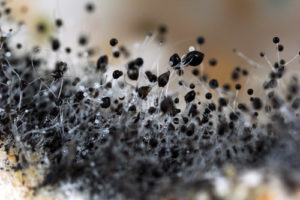The Black Menace: What To Know About Black Mold In Buildings

The Black Menace: What To Know About Black Mold In Buildings
Preventing a problem is preferable to solving one. Can architects and builders take a proactive approach to NYC mold removal through careful planning? Here’s a look at how mold affects buildings and ways to prevent it.
Health Dangers of Mold
Mold spores are constantly floating in the air. When a spore lands on a surface with a sufficient source of moisture, it begins reproducing and spreading. Once mold gets to a point where the infestation is clearly visible, it’s difficult to remove.
Stachybotrys chartarum, often referred to as black mold, emits mycotoxins that pose a serious health risk. Alternia and other common indoor molds are not considered toxic, but extended exposure can cause allergic reactions and respiratory ailments, especially with children and people with preexisting conditions.
Limiting Moisture: The Key to Mold Prevention
Since moisture is the crucial element for mold development, roofs and walls should be designed to be as waterproof as possible. Buildings should also have plentiful sources of sunshine and natural ventilation to help control humidity levels.
Prevention requires ongoing vigilance. Inspect homes frequently for cracks, leaks, holes and other signs of damage that could result in excess moisture. If mold reaches the advanced stage of infestation, it’s best to seek professional NYC mold removal.
Don’t Let Mold Get You Down!
Mold is no match for our non-intrusive, eco-friendly MoldExterm program. Infestations are removed usually within one day with minimum disruption to you and your family. Contact Stern Mold for a free inspection from our experienced technicians.
